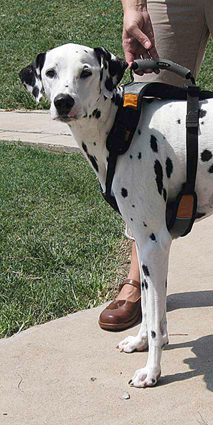Physical therapy began in the United States in the early 1900s and focused on treatment of acute anterior poliomyelitis, which reached its peak during the first 2 decades of the twentieth century. At this time physical therapy was not a true occupation; however, the foundations for the profession were developed. Some of these early applications of physical therapy included exercise, massage, and certain physical agent modalities.1 The need for physical rehabilitation during and immediately following World War I served to further enhance the emerging field of physical therapy. From its origins, physical therapy has focused on restoring maximal function to individuals with disabilities. Formal training in physical therapy began around 1918 and was developed by cooperative efforts between the office of the Surgeon General and personnel in civilian institutions. Individuals who completed these training courses were given the title of reconstruction aides, the earliest title of physical therapists.1 Many of these individuals worked in the military during this time. The first national organization was the American Women’s Physical Therapeutic Association, which was founded in 1921. In 1922 this name was changed to the American Physiotherapy Association, and in 1947 to the American Physical Therapy Association (APTA).1 Throughout the 1940s physical therapy continued to evolve and focused on treating patients who had contracted polio or those injured in World War II. This was a period of major growth in physical therapy, and because of the shortage of physical therapists, many more had to be trained during this time. From the 1940s to the present, physical therapy has gradually become a more autonomous and scientifically based profession. Physical therapy is an accepted medical intervention, and approximately 750,000 people are treated by physical therapists in the United States each day.2 The APTA is a national professional organization representing more than 71,000 physical therapists, physical therapist assistants, and students in the United States.3 Membership in the APTA is not mandatory for physical therapists practicing in the United States, and currently more than 172,000 physical therapists are licensed in the United States. The national professional organization that represents the approximately 84,000 veterinarians in the United States is the American Veterinary Medical Association (AVMA).4 The AVMA is responsible for evaluating and credentialing veterinary medical education, administering the national board examination for veterinarians, and overseeing the various specialty colleges (currently there are 21). The American College of Veterinary Sports Medicine and Rehabilitation, American College of Veterinary Surgeons; American College of Veterinary Internal Medicine, neurology subspecialty; American College of Veterinary Emergency and Critical Care; American Board of Veterinary Practitioners; American College of Veterinary Behaviorists; and American College of Veterinary Nutrition are specialty colleges or boards whose members are likely to treat patients that may benefit from rehabilitation. Examples of other related organizations include the American Academy of Veterinary Acupuncture and the American Veterinary Chiropractic Association. Veterinarians usually have an average of 4 years of undergraduate education, followed by 4 years of professional curriculum at an AVMA-approved college. Currently there are 33 approved colleges of veterinary medicine in the United States and Canada graduating approximately 2100 veterinarians yearly.4 In addition, there are now 13 non-Canadian foreign colleges of veterinary medicine that are approved by the AVMA. Veterinarians are required to pass national and, in some cases, state board examinations to practice. Some graduate veterinarians pursue additional training in the form of general internships and residencies in specialties. Specialty certification requires an internship or equivalent training, completion of a formal 2- to 3-year residency program, publication and research requirements, and successful completion of a certifying examination. There are currently 21 specialties recognized by the AVMA. Veterinary technicians complete at least 2 years at an AVMA-accredited program and receive at least an associate’s degree. There are currently nine distance learning programs in veterinary technology accredited or in the process of accreditation by the AVMA Committee on Veterinary Technician Education and Activities. In approximately 40 states and provinces, veterinary technicians are certified, registered, or licensed.5 Candidates are tested for competency through an examination that may include oral, written, and practical portions. A state board of veterinary examiners or the appropriate state agency regulates this process. A national examination is available; however, requirements vary by individual states. Veterinary technician specialty organizations recognized by the North American Veterinary Technician Association include the Academy of Veterinary Emergency Critical Care Technicians, Academy of Veterinary Technician Anesthetists, Academy of Veterinary Surgical Technicians, Academy of Veterinary Dental Technicians, Academy of Internal Medicine for Veterinary Technicians, Academy of Equine Veterinary Nursing Technicians, Academy of Veterinary Nutrition Technicians, and the Academy of Veterinary Behavior Technicians.6
Conceptual Overview of Physical Therapy, Veterinary Medicine, and Canine Physical Rehabilitation

Physical Therapy as a Profession
History of the Physical Therapy Profession in the United States
The American Physical Therapy Association
Veterinary Medicine as a Profession
History of the Veterinary Profession
The American Veterinary Medical Association
Veterinary and Veterinary Technician Education
![]()
Stay updated, free articles. Join our Telegram channel

Full access? Get Clinical Tree


